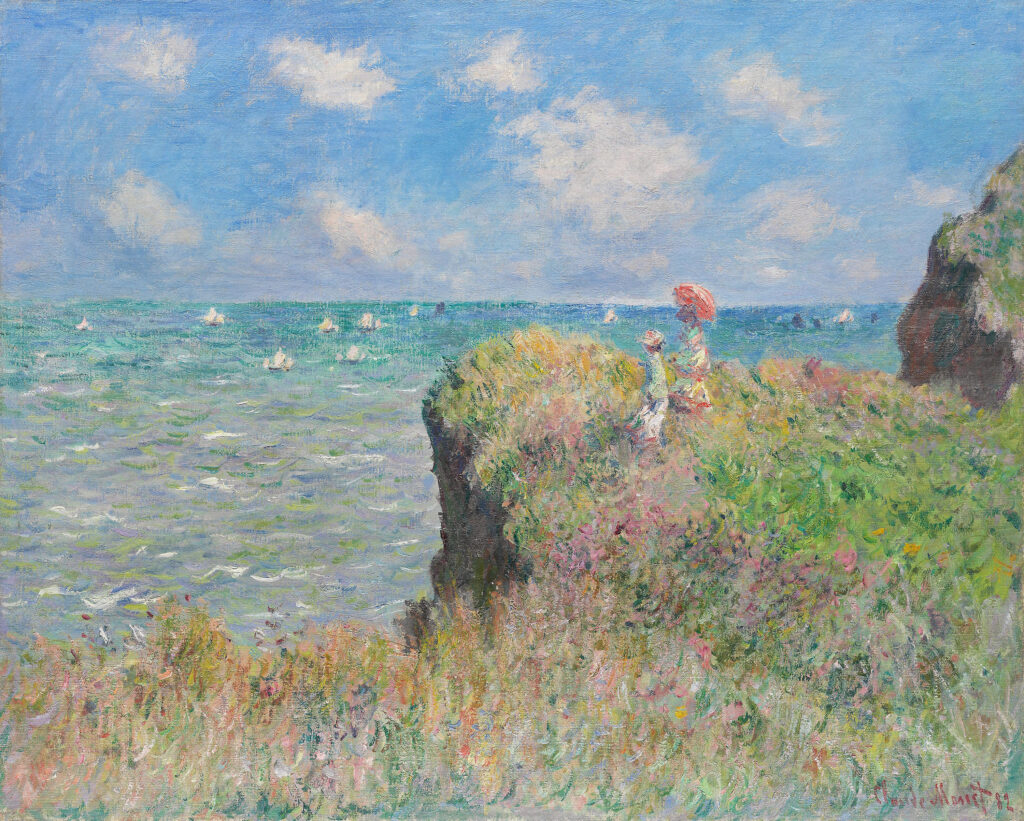
Claude Monet’s Cliff Walk at Pourville painting is an iconic work of art that perfectly captures the essence of Impressionism. This French masterpiece depicts a scenic landscape of the ocean, cliffs, and natural beauty that is sure to leave an impression on anyone who views it.
In this blog post, we will explore the symbolism behind this painting, as well as provide insight into techniques used by Monet to create this masterpiece.
The first thing that strikes the viewer about this painting is the use of color. Monet’s palette is vibrant and bold, with contrasting blues, greens, and yellows that perfectly capture the essence of nature. The texture of the painting is also remarkable, with thick brushstrokes and impasto techniques that add depth and dimension to the landscape.
But beyond the technique and style of the painting, there is a deeper symbolism that Monet was trying to convey. The cliffs in the painting represent a sense of stability and strength, while the ocean waves symbolize the ebb and flow of life. The figures walking on the path are also symbolic, representing the human journey through life and the search for meaning and purpose.
In many ways, Monet’s Cliff Walk at Pourville painting is a perfect example of naturalism, where the beauty and complexity of nature are captured in all their glory. But it is also a reminder of the deeper meaning and symbolism that exists beneath the surface of things.
In conclusion, Claude Monet’s Cliff Walk at Pourville painting is a timeless work of art that continues to inspire and captivate audiences to this day. Its use of color, texture, and symbolism make it a masterpiece of Impressionism, and a testament to the power of art to capture the beauty and complexity of the world around us.

